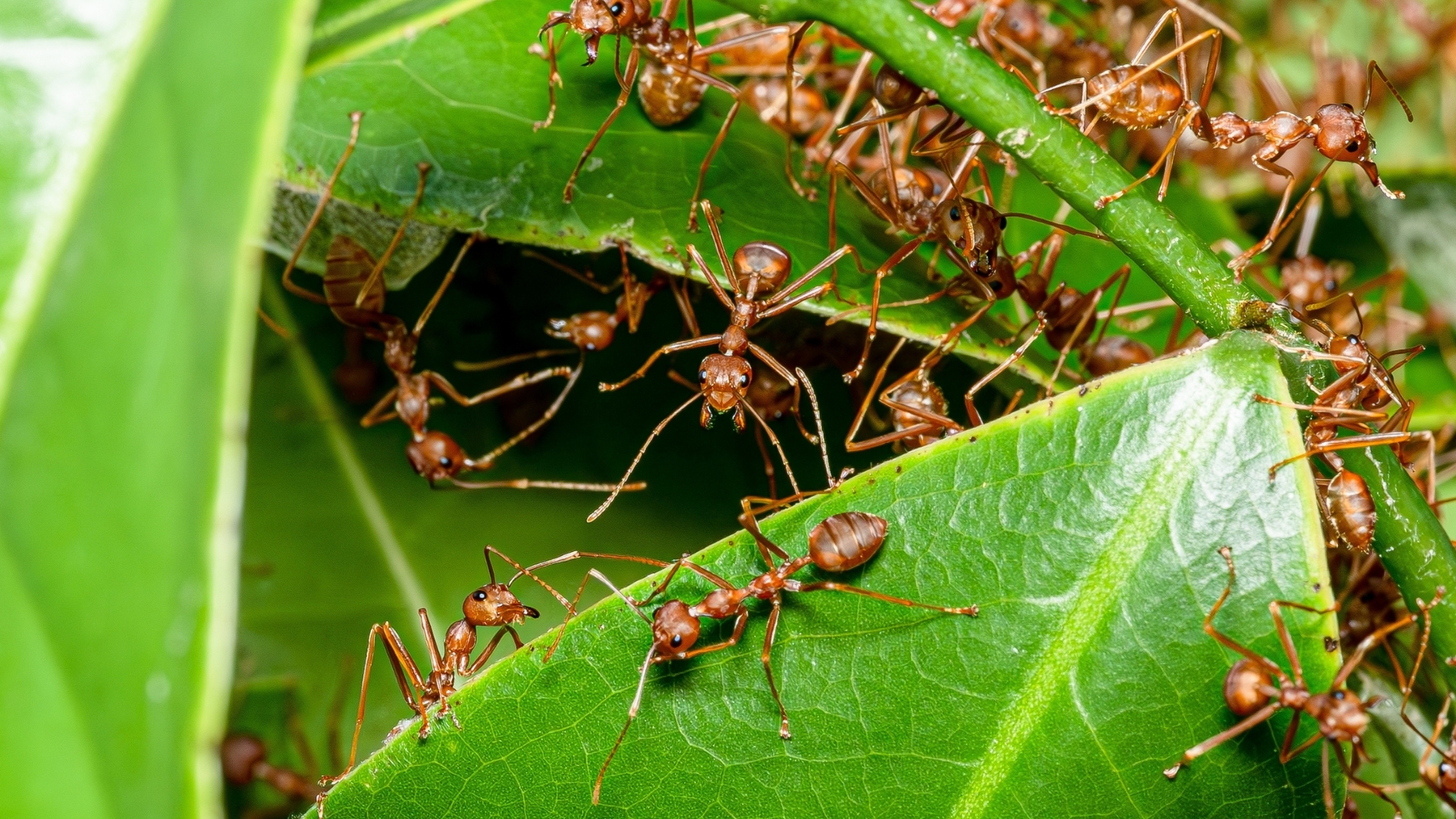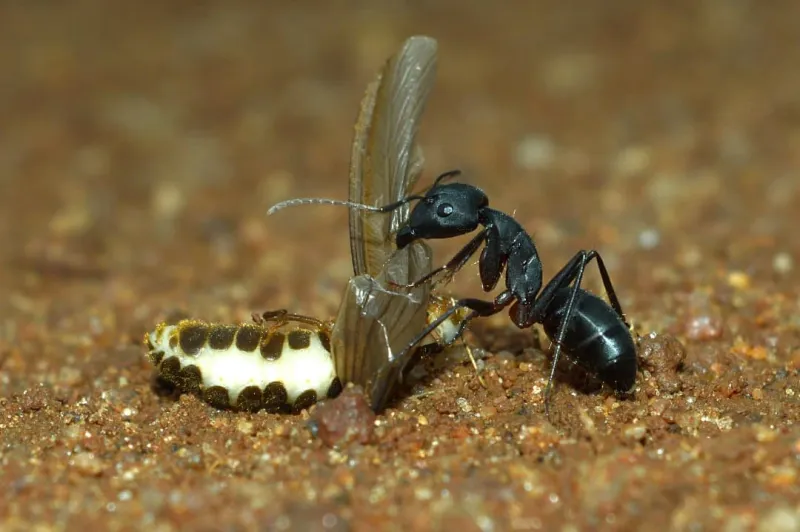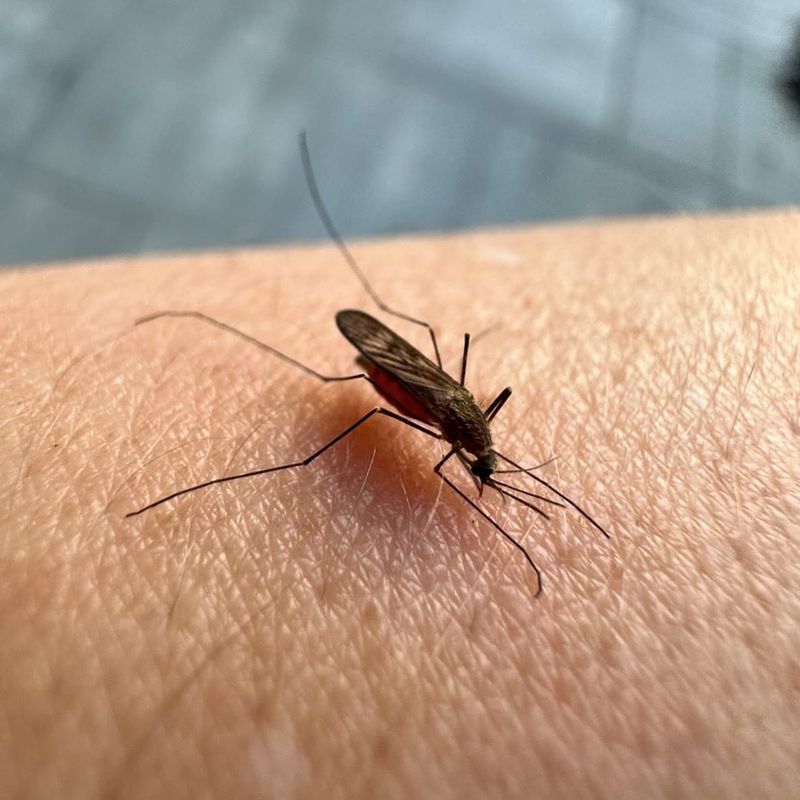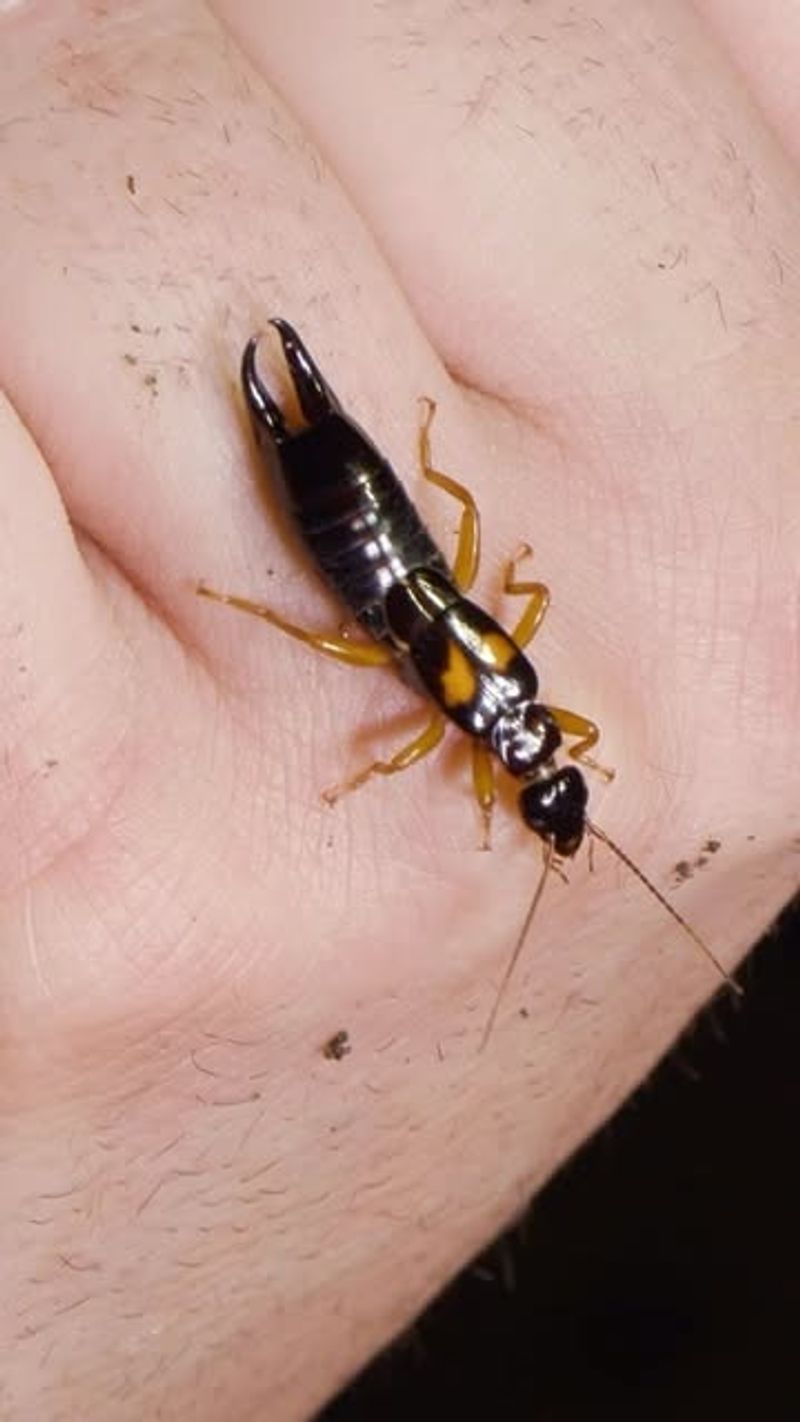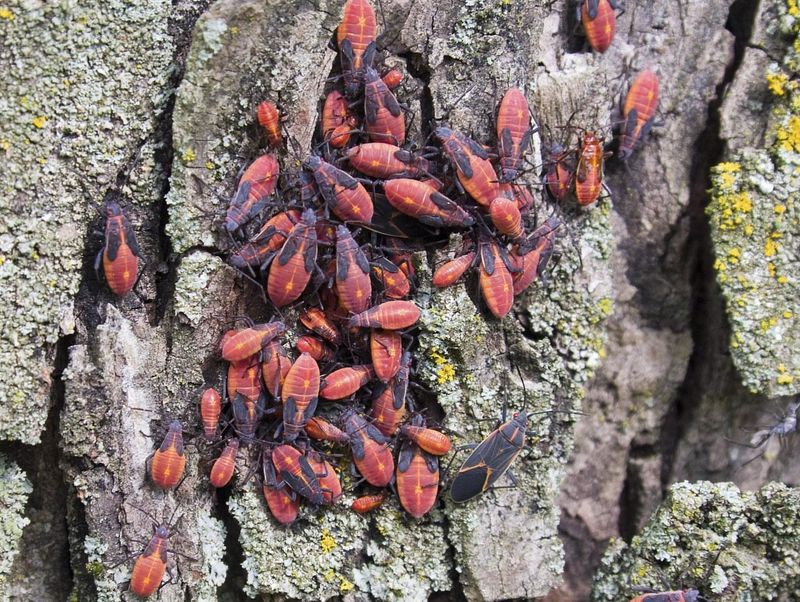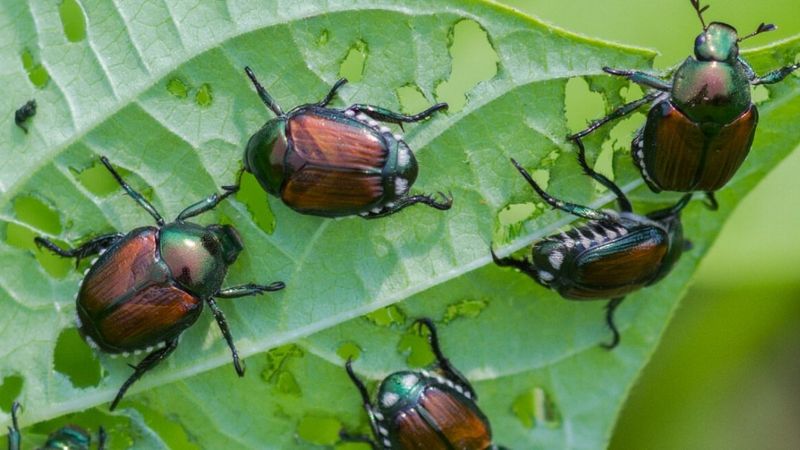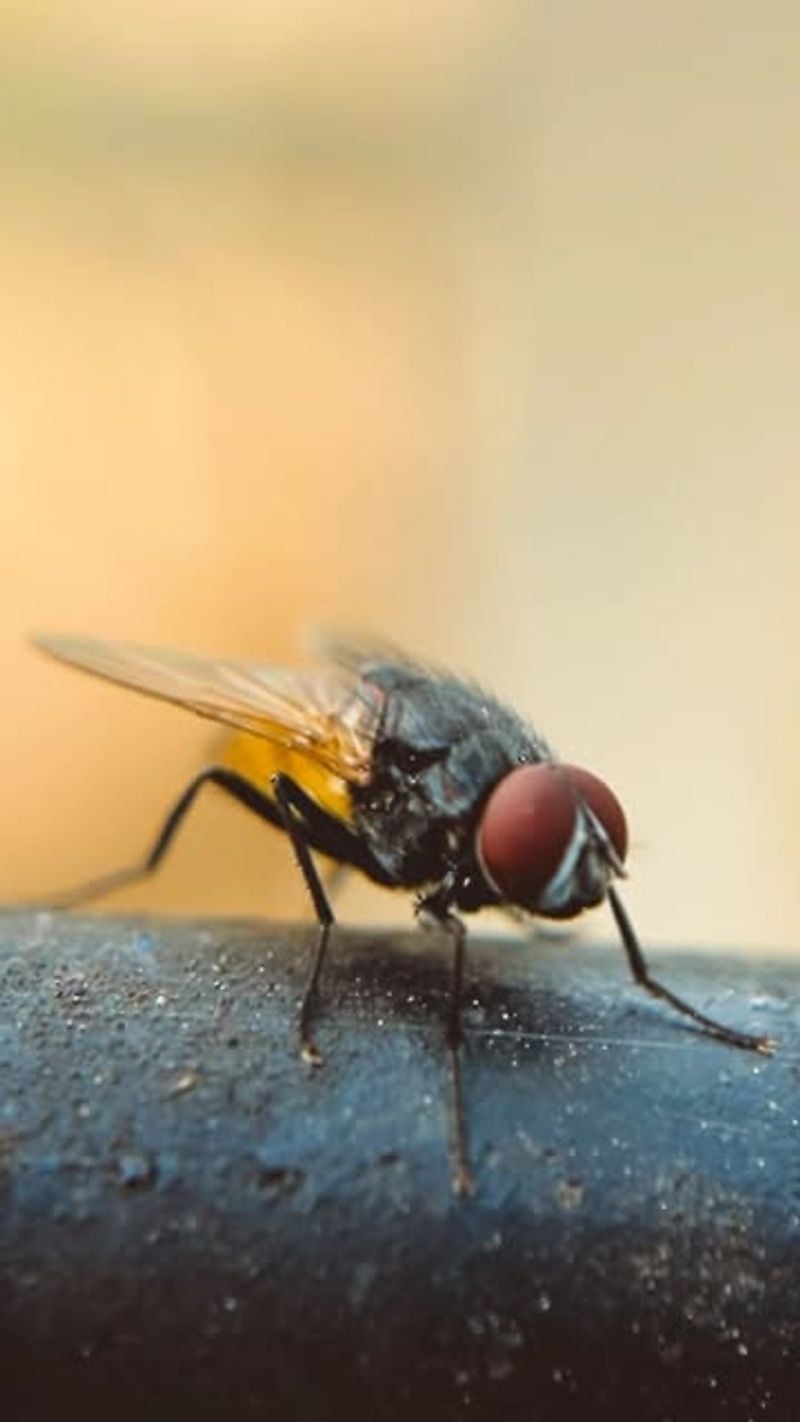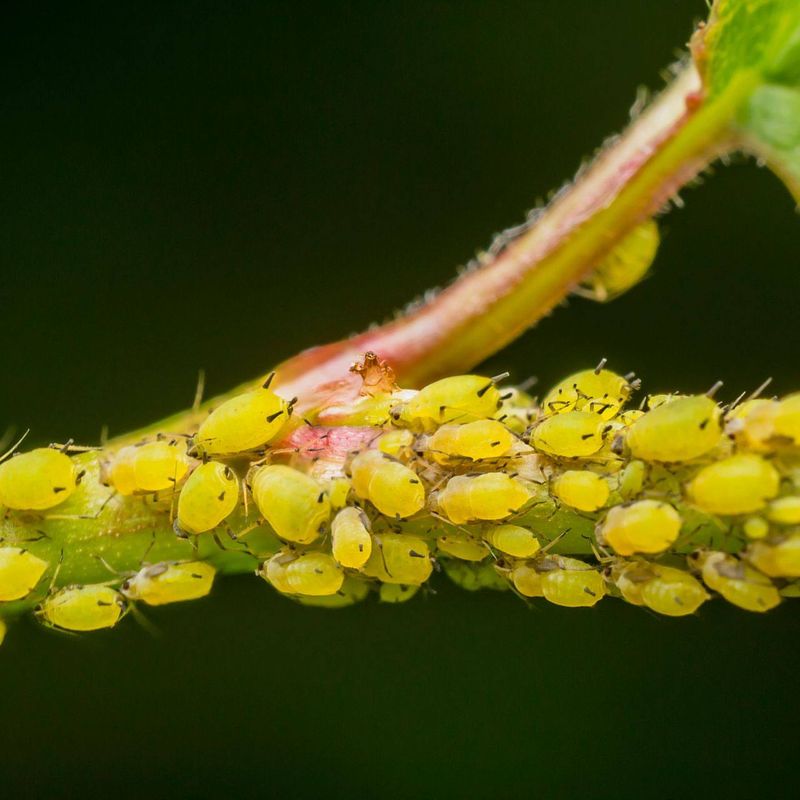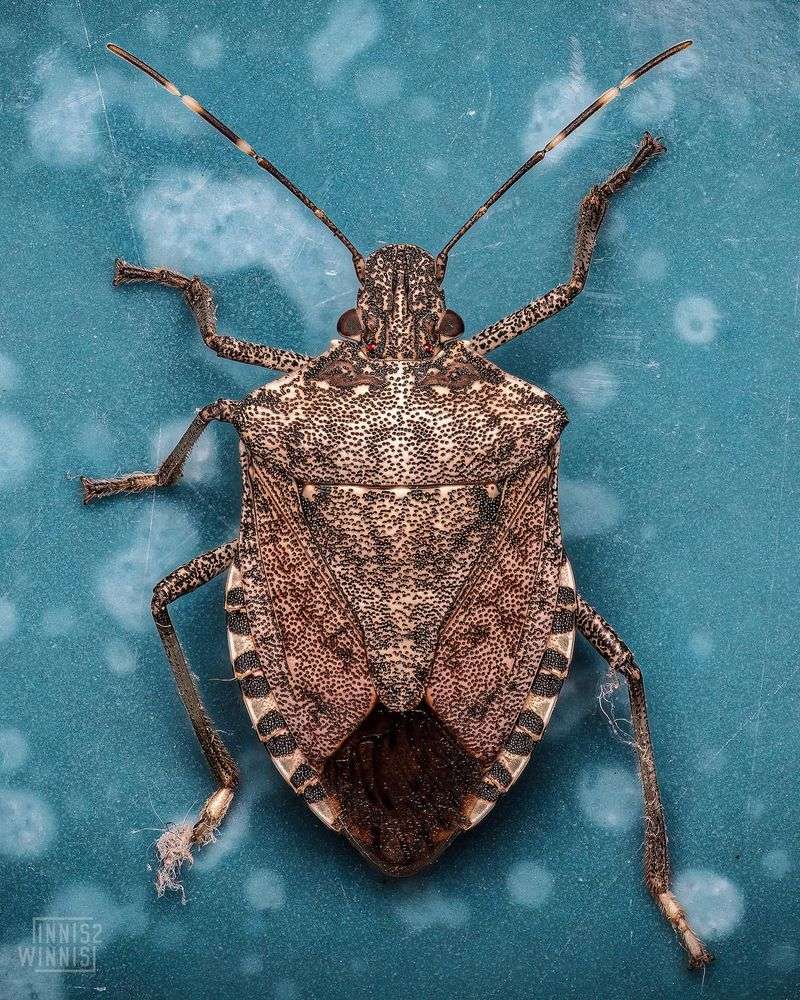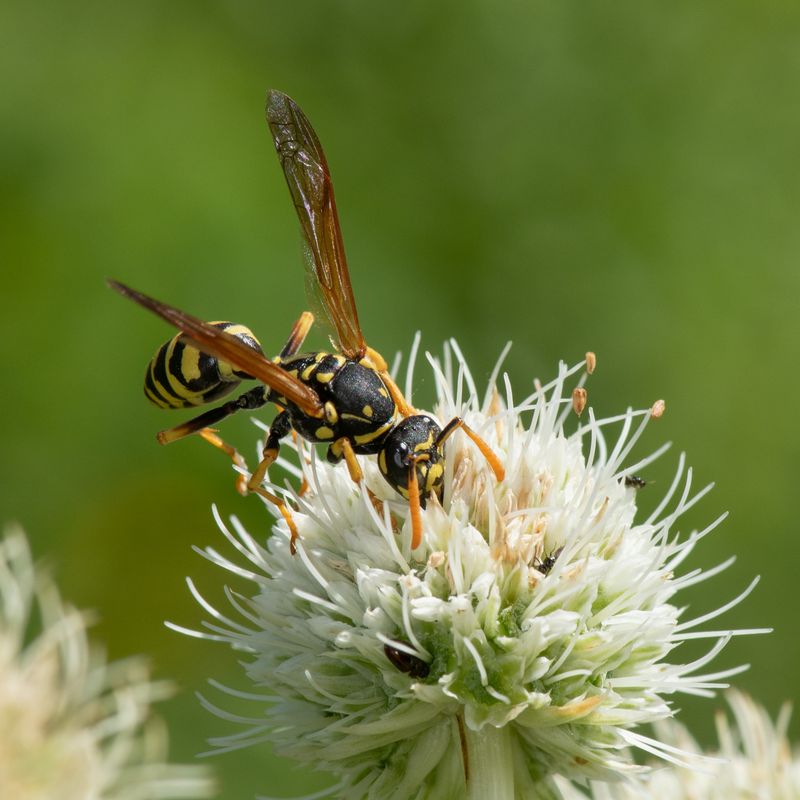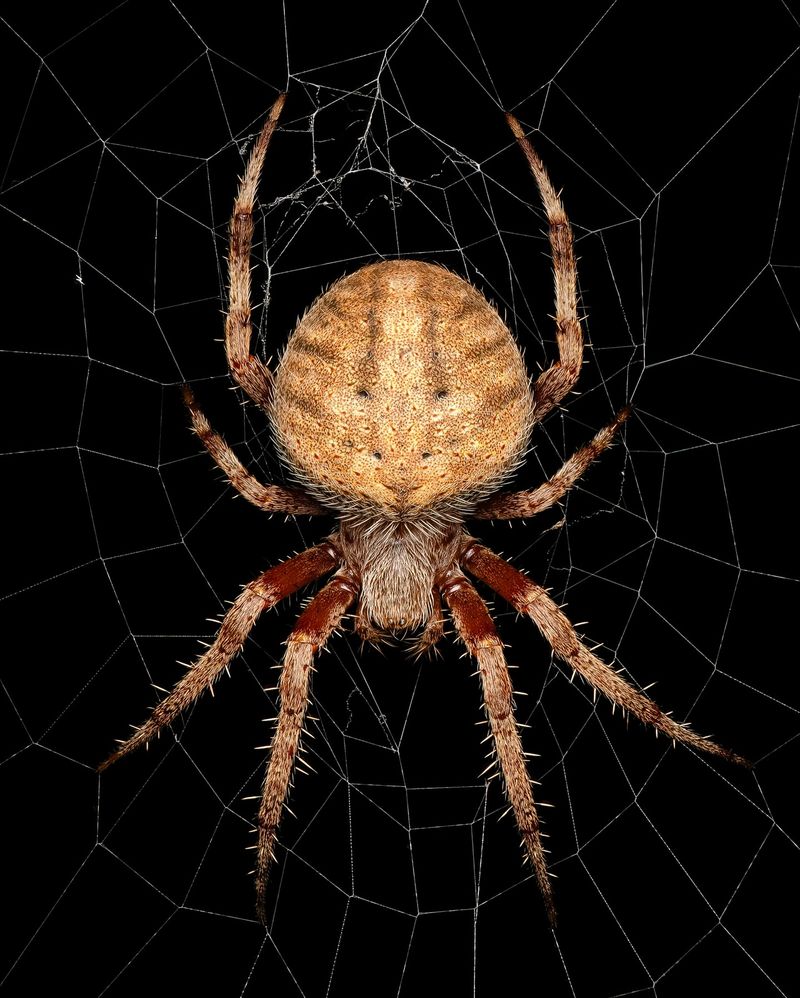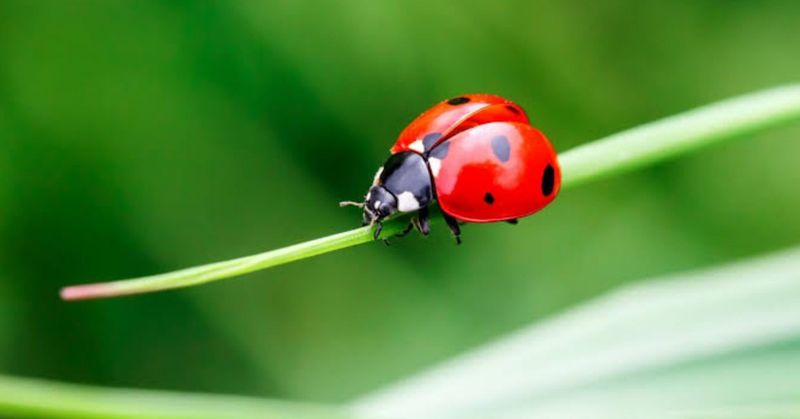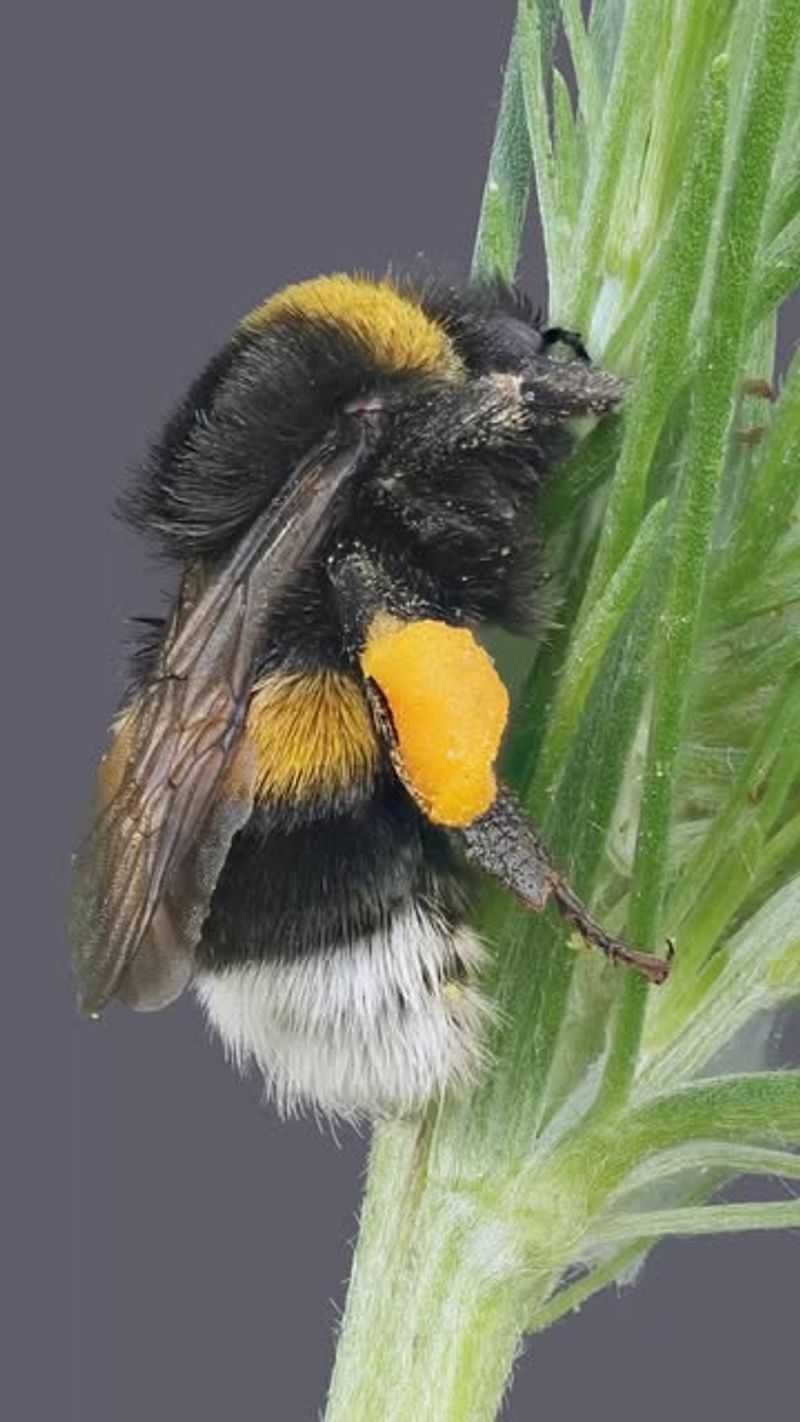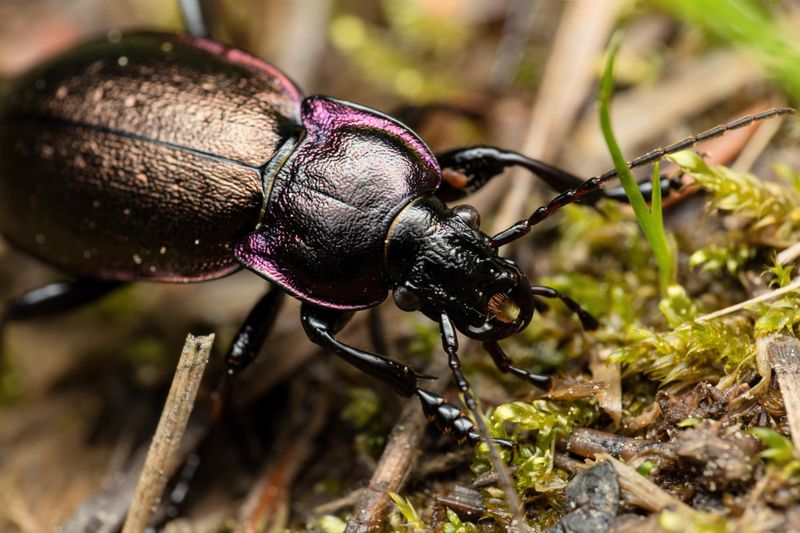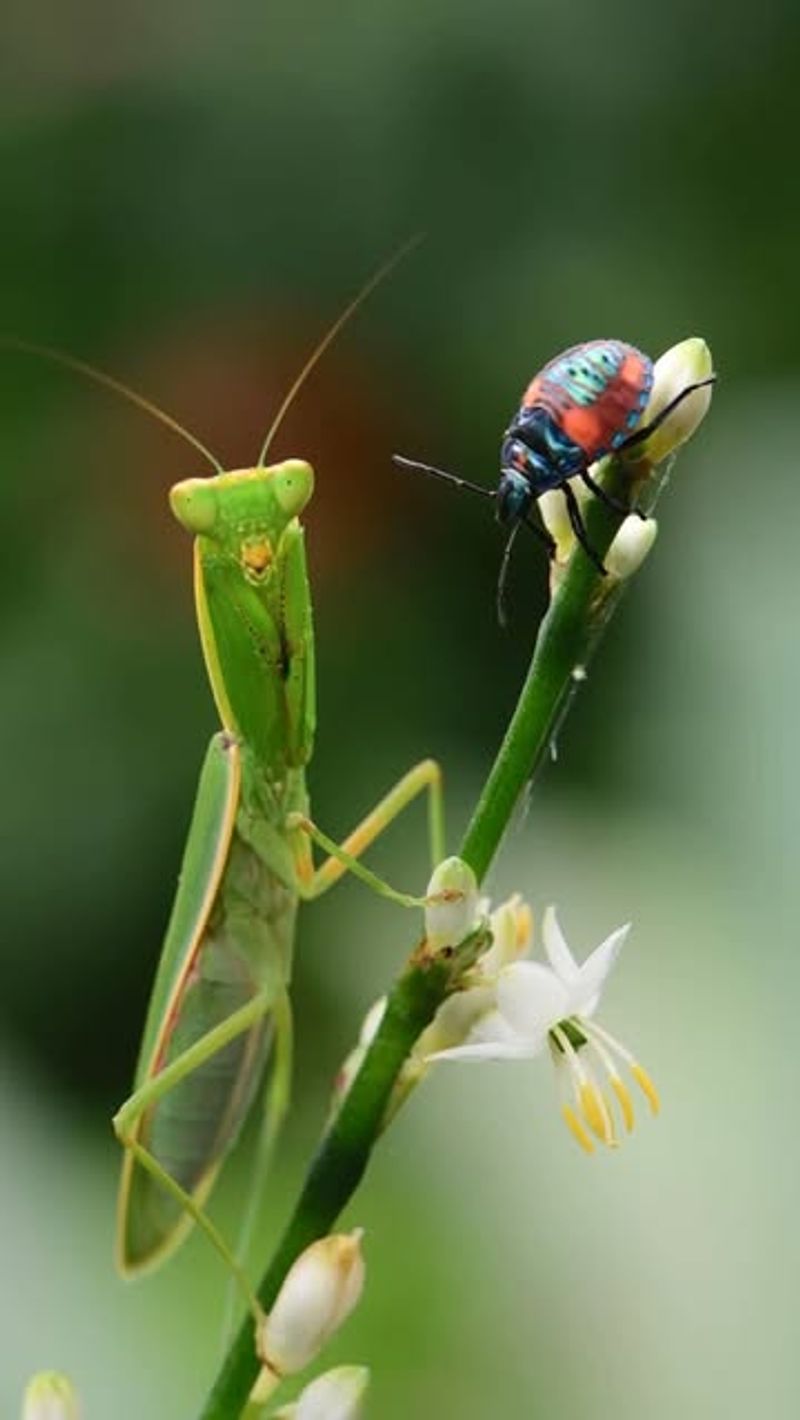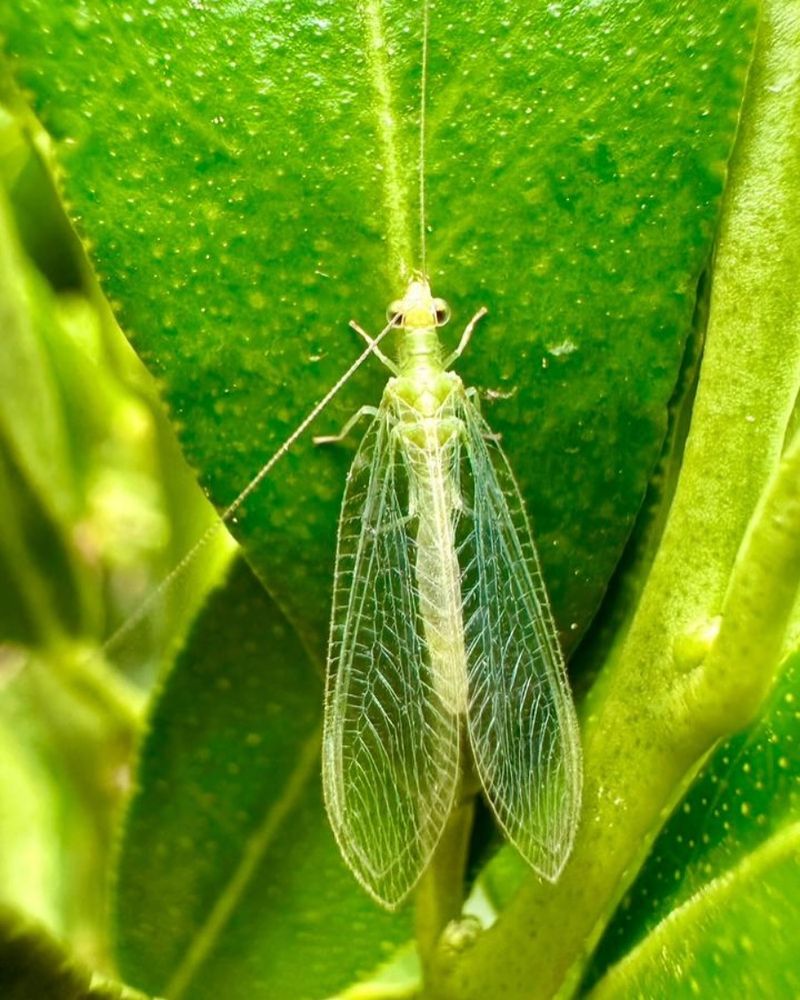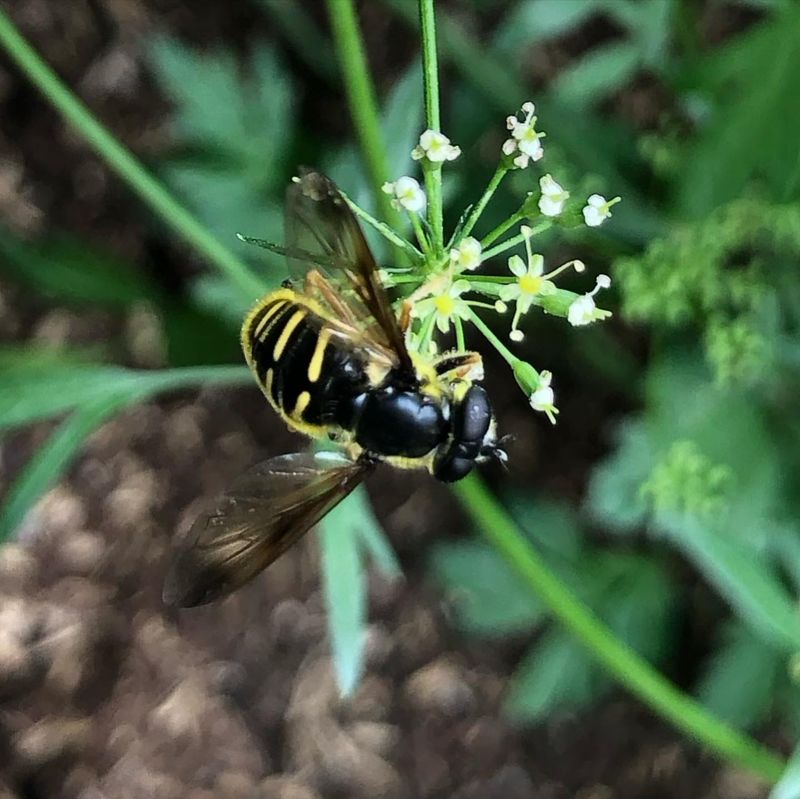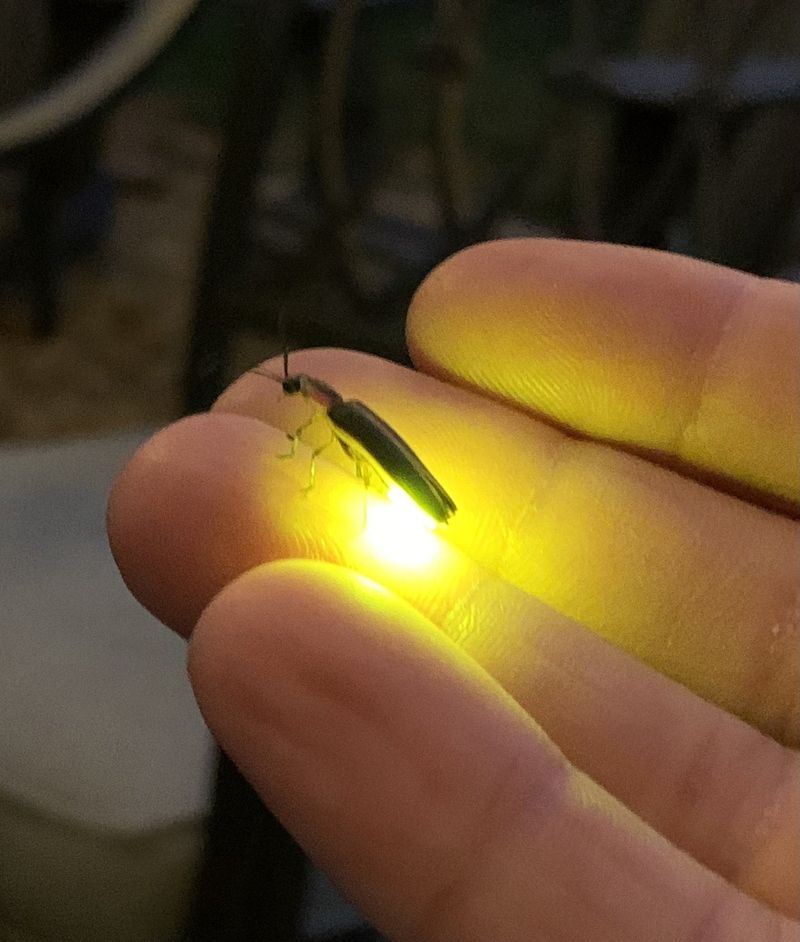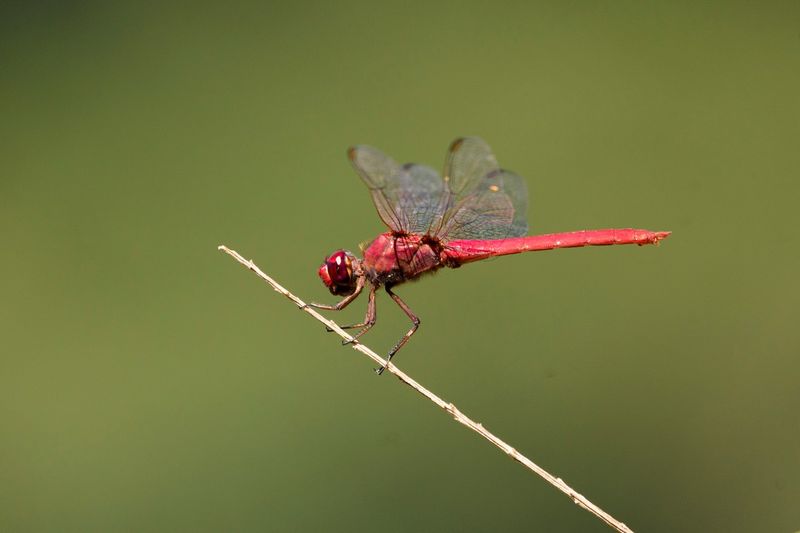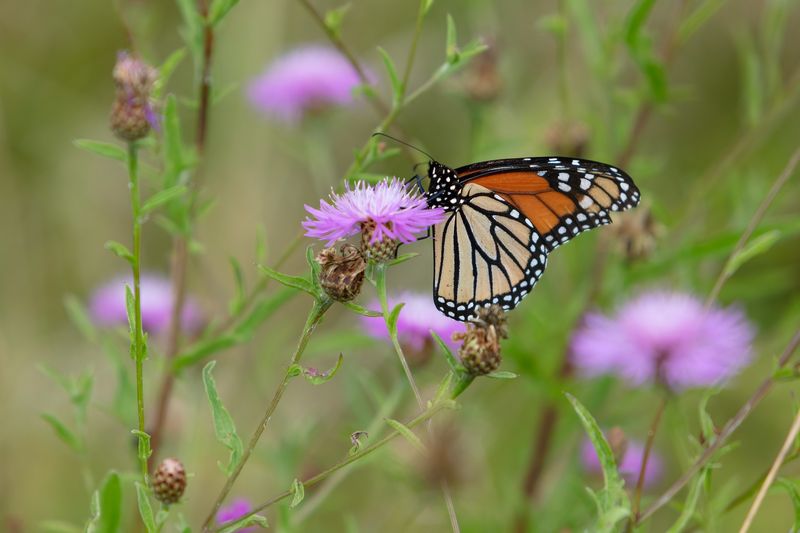Not all bugs are bad—some are actually doing your garden a huge favor. I used to squash anything that crawled or flew too close, but now I know better.
Over time, I’ve learned to tell the difference between the usual backyard insects and the ones that mean your yard is in great shape.
This list covers 10 common insects you probably see all the time, plus 10 that are signs of a healthy, thriving yard. You might be surprised at who the real garden heroes are!
1. Ants
Those tiny troops marching in organized lines across your patio aren’t just random visitors. Ants are nature’s cleanup crew, constantly working to break down organic matter and aerate soil as they tunnel.
While some species can be problematic near homes, most garden ants actually help control other pest populations by feeding on their eggs and larvae. Their presence is perfectly normal in any yard.
2. Mosquitoes
Everyone’s least favorite summer companion makes its presence known with that distinctive high-pitched whine. Mosquitoes breed in standing water, even tiny amounts found in flowerpot saucers or clogged gutters.
Female mosquitoes are the biters, needing blood to produce eggs while males feed on plant nectar. Regular yard maintenance to eliminate standing water helps reduce their populations naturally.
3. Earwigs
Despite their scary-looking rear pincers, these reddish-brown insects are mostly harmless to humans. Earwigs love dark, damp places and often appear under flowerpots, mulch, or garden debris.
Their reputation is worse than their impact – while they might nibble on some plants, they also eat other garden pests like aphids. The pincers are primarily used for defense and catching prey, not for attacking people.
4. Boxelder Bugs
With distinctive black bodies marked by orange-red lines, boxelder bugs are easy to spot clustering on sunny walls or tree trunks. They feed primarily on seeds from boxelder and maple trees.
These bugs become more noticeable in fall when they gather to find winter shelter. While they can be annoying when they enter homes, they don’t bite, sting, or cause structural damage to your property.
5. Japanese Beetles
Metallic green and copper beetles that arrive in early summer, Japanese beetles can quickly skeletonize plant leaves. Their feeding frenzy typically lasts about six weeks, during which they target roses, grapes, and many other garden plants.
Adult beetles emerge from lawn grubs that feed on grassroots. Managing both life stages through targeted treatments helps minimize damage to your favorite garden plants during beetle season.
6. Houseflies
Fast-moving and persistent, houseflies are universal yard visitors that buzz around outdoor gatherings. They’re attracted to food waste, pet waste, and compost piles where they can both feed and lay eggs.
A single female can lay hundreds of eggs in her short lifespan. Good sanitation practices like covering trash cans and promptly cleaning up after pets helps reduce their numbers around your outdoor living spaces.
7. Aphids
Tiny pear-shaped insects that cluster on new plant growth, aphids suck sap and can weaken plants when present in large numbers. Their sticky honeydew excretion often leads to black sooty mold on leaves.
Garden hoses can blast aphids off plants with a strong spray of water. Their presence often attracts beneficial insects like ladybugs, which helps create a natural balance in a healthy garden ecosystem.
8. Stink Bugs
Shield-shaped and mottled brown, stink bugs earned their name from the defensive odor they release when threatened. They pierce plant tissues with their mouthparts to feed on sap from fruits, stems, and leaves.
Many gardeners spot these insects sunning themselves on walls or windows. While some species are agricultural pests, others are predatory and actually help control caterpillars and other plant-eating insects in your yard.
9. Wasps
Paper wasps, yellowjackets, and hornets build distinctive nests in trees, under eaves, or in ground holes around yards. While their stinging reputation causes concern, most wasps are actually beneficial predators of garden pests.
They hunt caterpillars and fly larvae to feed their young, providing natural pest control. Giving them space and respecting their territory usually prevents stinging incidents in your outdoor living areas.
10. Spiders
Technically arachnids rather than insects, spiders are common yard residents that build webs in corners, between plants, and along structures. Garden spiders with their impressive orb webs are particularly noticeable after morning dew.
Most garden spiders are completely harmless to humans while being voracious predators of flies, mosquitoes, and other insects. Their presence indicates a healthy ecosystem with a good balance of predator and prey relationships.
11. Ladybugs
Bright red with black spots, ladybugs are welcome garden allies that feast on aphids, mealybugs, and other soft-bodied pests. A single ladybug can consume up to 5,000 aphids in its lifetime!
Both adults and their alligator-shaped larvae are beneficial predators. Finding these beetles patrolling your plants means natural pest control is happening without any effort on your part – a clear sign of garden health.
12. Honeybees
Fuzzy, golden-striped pollinators that move methodically from flower to flower are a gardener’s best friends. Honeybees collect nectar and pollen, inadvertently transferring pollen between blooms as they work.
Gardens with regular honeybee visitors typically produce more fruits and vegetables with better quality. Their presence indicates your yard offers good nectar sources and is free from harmful pesticides – definite signs of a healthy environment.
13. Bumblebees
Plump, fuzzy bees with distinctive black and yellow bands, bumblebees are super-pollinators that can work in cooler temperatures than honeybees. Their ability to “buzz pollinate” by vibrating their flight muscles makes them especially valuable for tomatoes and blueberries.
Unlike honeybees, bumblebees live in small colonies in ground nests. Seeing these gentle giants visiting various flowers throughout your yard is a strong indicator of plant diversity and ecological health.
14. Ground Beetles
Shiny black beetles scurrying across soil when you move a rock or log are likely ground beetles. These fast-moving insects are nocturnal predators that hunt slugs, snails, and many soil-dwelling pests.
Their presence indicates healthy soil with good structure and organic matter. Ground beetles spend their days hiding under mulch or stones, emerging at night to patrol your garden and provide free pest management services.
15. Praying Mantids
Masters of camouflage with triangular heads and grasping front legs, praying mantids are patient ambush predators. They wait motionless on plants before striking at passing insects with lightning speed.
Mantids aren’t picky eaters – they’ll catch anything they can overpower, including pest insects and occasional beneficial ones. Finding these fascinating hunters in your yard means you have enough insect diversity to support top predators.
16. Lacewings
Delicate insects with transparent, intricately veined wings and golden eyes, lacewings are beautiful garden allies. Adult lacewings feed on nectar and pollen, but their larvae are voracious predators nicknamed “aphid lions.”
Each lacewing larva can consume up to 200 aphids per week! Finding their distinctive eggs – tiny white ovals on thin stalks attached to leaves – indicates your garden has the right balance of pests and predators.
17. Hoverflies
Often mistaken for bees or wasps, these harmless flies sport yellow and black striped patterns. Hoverflies perform double-duty in healthy gardens – adults are important pollinators while their maggot-like larvae feast on aphids.
A single hoverfly larva can consume hundreds of aphids during development. Their presence indicates your yard has both flowering plants for adults and enough pest insects to support their young – a balanced ecosystem at work.
18. Fireflies
Evening light shows from these beetles (also called lightning bugs) create magical summer memories. Fireflies use their glowing abdomens for finding mates, with each species having unique flash patterns.
Their larvae live in soil or leaf litter, hunting slugs, snails, and other soft-bodied prey. Yards with fireflies typically have minimal pesticide use, natural areas with tall grasses, and healthy moisture levels – all signs of ecological balance.
19. Dragonflies
Acrobatic fliers with elongated bodies and two pairs of transparent wings, dragonflies patrol yards near water sources. These aerial hunters catch mosquitoes, midges, and other flying insects on the wing.
Both dragonfly adults and their aquatic nymphs are predators. Their presence indicates clean water nearby and healthy insect populations. Gardens with regular dragonfly visitors typically have good biodiversity and minimal chemical inputs.
20. Butterflies
Colorful daytime visitors that float from flower to flower, butterflies are both beautiful and functional garden residents. Different species visit different plants, with adults seeking nectar while caterpillars feed on specific host plants.
Gardens attracting diverse butterfly species have excellent plant diversity and structure. Their presence indicates your yard provides both nectar sources and caterpillar food plants – a complete habitat supporting full life cycles.

